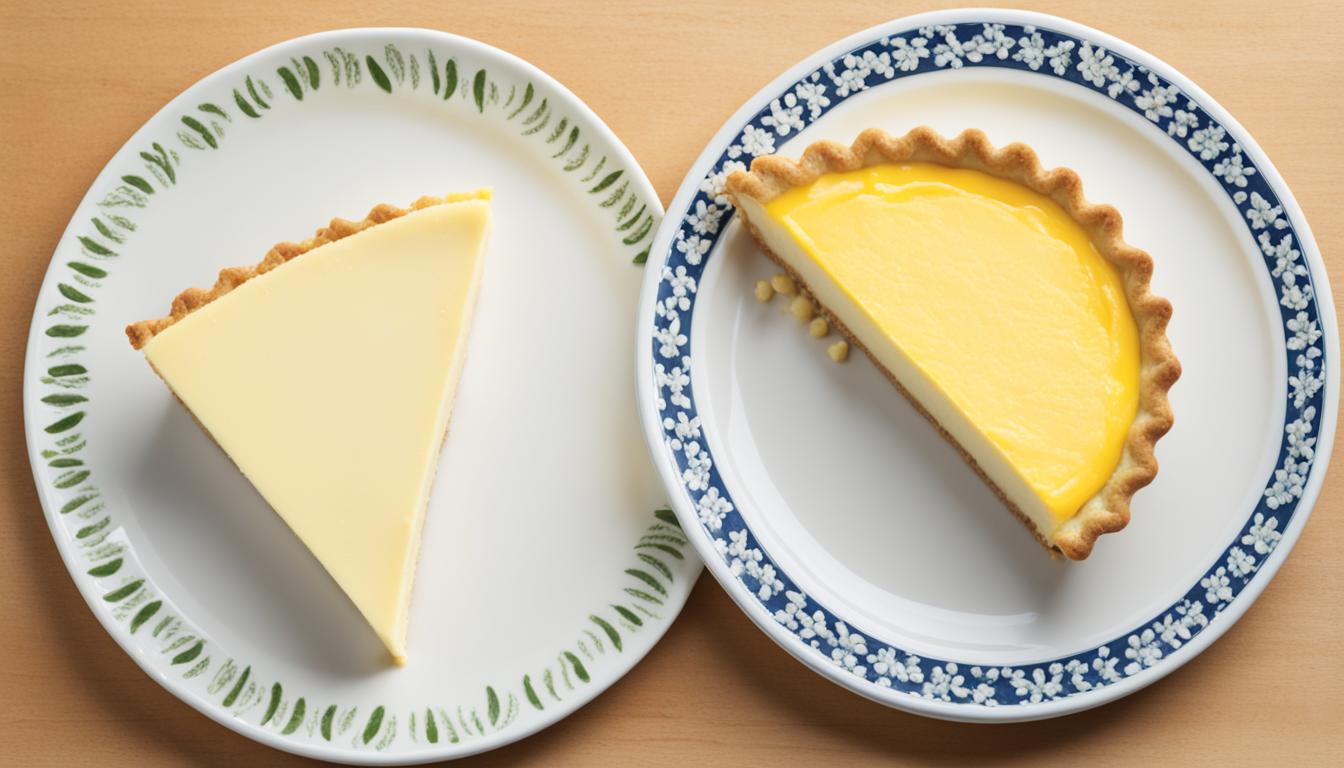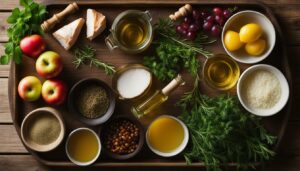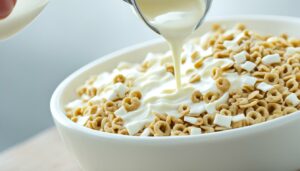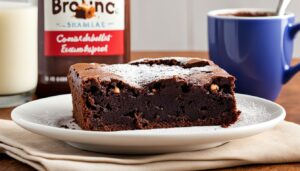When it comes to baking and cooking, the debate between butter and margarine has been ongoing for years. But have you ever wondered if you can substitute butter for margarine in a recipe? Does it affect the taste or texture of your favorite dishes? Let’s delve into the butter vs margarine substitution debate and find out the answer!
Contents
- 1 Butter and Margarine Interchangeability
- 2 Healthier Swaps for Margarine
- 3 The Difference Between Butter and Margarine
- 4 Which is Healthier? Butter or Margarine?
- 5 Butter and Margarine in Baked Goods
- 6 Using Healthy Butter Alternatives
- 7 Butter or Margarine for Cooking
- 8 Conclusion
- 9 FAQ
- 9.1 Can butter be substituted for margarine in a recipe?
- 9.2 Can I use butter instead of margarine when baking?
- 9.3 What are some healthy butter alternatives for margarine substitutes?
- 9.4 What is the difference between butter and margarine?
- 9.5 Which is healthier, butter or margarine?
- 9.6 Can both butter and margarine be used in baked goods?
- 9.7 What are some good substitutes for margarine when baking?
- 9.8 Can I use butter or margarine for cooking?
- 9.9 What is the conclusion about butter and margarine substitution?
- 10 Source Links
Key Takeaways:
- Substituting butter for margarine is possible in recipes.
- Both butter and margarine can be used interchangeably.
- Consider individual dietary needs and preferences when choosing between butter and margarine.
- There are healthy alternatives to margarine for those looking to cut down on calories and fat.
- Test the recipe when making substitutions to ensure the desired outcome.
Butter and Margarine Interchangeability
When it comes to baking, butter and margarine can be used interchangeably in recipes. However, it’s important to note that there may be slight differences in texture and flavor between the two.
Butter tends to yield better results in baking, providing a greater depth of flavor and the ability to brown and caramelize. It adds richness and a distinct taste that many bakers prefer.
Margarine, on the other hand, can be a suitable substitute, especially in vegan or plant-based recipes. It is often used as an alternative for those with dietary restrictions or for individuals looking to reduce their intake of cholesterol and saturated fats.
When substituting margarine for butter, it is recommended to do a one-to-one substitution. This means that if a recipe calls for 1 cup of butter, you can replace it with 1 cup of margarine. However, it’s always a good idea to test the outcome of the recipe when making substitutions to ensure the desired results.
While there can be differences in the final outcome, both butter and margarine can be successfully used in a wide variety of baking recipes. The choice between the two ultimately comes down to personal preference and dietary needs.
Benefits of Using Butter:
- Rich flavor
- The ability to brown and caramelize
- Preferred choice for many bakers
Benefits of Using Margarine:
- Suitable for vegan or plant-based recipes
- Alternative for those with dietary restrictions
- Lower in cholesterol and saturated fats
Regardless of your choice, baking with butter or margarine can result in delicious and satisfying treats. Experiment with both to find your preferred option!
Healthier Swaps for Margarine
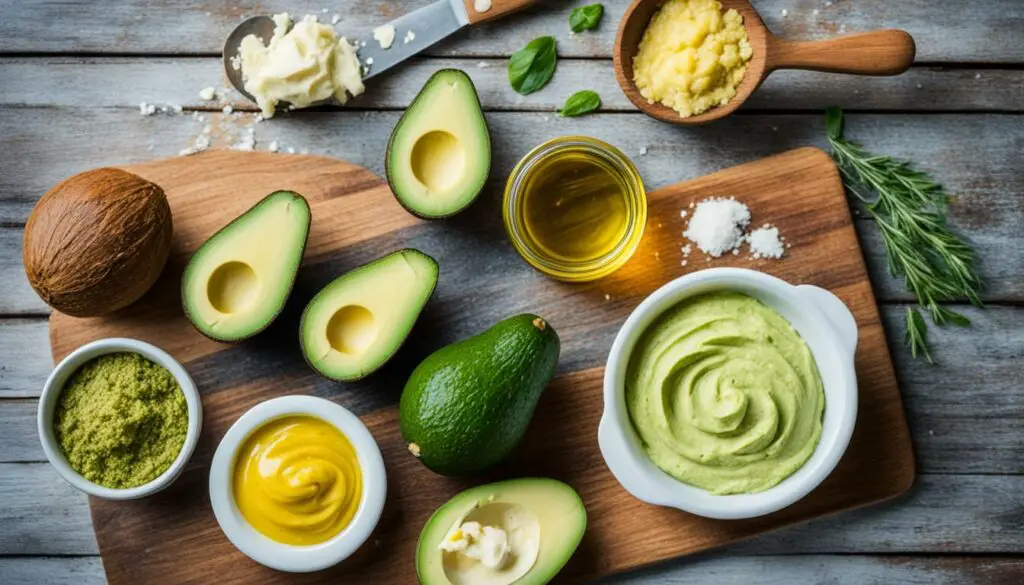
If you’re looking for healthier alternatives to margarine, there are several options. Coconut oil, olive oil, canola oil, avocado oil, and vegetable oil can all be used as substitutes for margarine in recipes. In most cases, oil can be substituted for margarine at a 3:4 ratio. This accounts for any water or other ingredients in the margarine.
Other healthier substitutes for margarine include:
- Softened cream cheese: Cream cheese can add richness and creaminess to your recipes. It works well as a substitute for margarine in both baking and spreading.
- Reduced-fat cream cheese: If you’re looking for a lower-fat option, reduced-fat cream cheese can be a good choice. It still provides a creamy texture but with less fat content.
- 60% to 70% vegetable or olive oil spread (trans-fat-free): These spreads are made with vegetable or olive oil and are free from trans fats. They can be a healthier alternative to margarine.
- Tofu (best in brownies): Silken tofu can be blended and used as a healthy substitute for margarine in brownie recipes. It adds moisture and a light texture to your baked goods.
- Baby prunes (best in dark baked goods): Pureed baby prunes can be used as a substitute for margarine in dark baked goods like chocolate cakes and brownies. They add natural sweetness and moisture.
- Unsweetened applesauce (cuts fat and adds vitamin C): Applesauce can be used in place of margarine to reduce the fat content in your recipes. It also adds natural sweetness and provides the added benefit of vitamin C.
These alternatives can help cut down on calories and fat while still providing a similar texture and flavor in your recipes.
The Difference Between Butter and Margarine
When it comes to butter and margarine, there are distinct differences in terms of composition and flavor. Butter is made from cream, and sometimes salt is added to enhance its taste. On the other hand, margarine is a combination of oils, water or milk, vitamins, salt, preservatives, sweeteners, emulsifiers, and additives.
One of the key characteristics of butter is its pronounced flavor, which can add richness to dishes. It can also be browned and used as a thickening agent, making it versatile in various cooking applications. Margarine, however, is artificially flavored to taste like butter and is often used as a substitute for those with dietary restrictions or for those looking to limit cholesterol and saturated fat intake.
Butter Composition:
| Ingredients in Butter | Purpose |
|---|---|
| Cream | Primary ingredient, provides richness and texture |
| Salt (optional) | Enhances flavor |
Margarine Composition:
| Ingredients in Margarine | Purpose |
|---|---|
| Oils | Source of fat, used for texture and spreadability |
| Water or Milk | Provides moisture |
| Vitamins | Fortifies with additional nutrients |
| Salt | Enhances flavor |
| Preservatives | Improves shelf life |
| Sweeteners | Ensures desired taste |
| Emulsifiers and Additives | Aids in texture and stability |
When choosing butter or margarine, it’s important to select high-quality products to ensure the best results in cooking and baking. The choice between butter and margarine ultimately depends on personal preference, dietary restrictions, and individual health goals.
Which is Healthier? Butter or Margarine?
When it comes to health, the choice between butter and margarine can be a bit confusing. Let’s dive into the details to understand which one is considered healthier and how it affects our cooking.
“Moderation is key when using butter, as it is higher in saturated fat. Margarine can be a better choice for those looking to limit cholesterol and saturated fat intake.”
Butter is made from fewer ingredients and is less processed compared to margarine. It contains only cream and salt, which makes it a more natural option. On the other hand, margarine often contains a variety of vegetable oils, artificial flavors, and preservatives. While margarine may offer some benefits in terms of limiting cholesterol and saturated fat, it’s important to consider the overall ingredients and processing involved.
It’s worth mentioning that butter is higher in saturated fat, which may not be ideal for individuals with certain dietary needs or health conditions. However, when used in moderation, butter can provide rich flavor and can be a great choice for cooking and baking.
Margarine, with its lower saturated fat content, is often recommended for those who want to limit their intake of cholesterol and saturated fat. It can be a suitable substitute for butter in recipes. However, it’s important to choose a high-quality margarine that does not contain trans fats or artificial ingredients.
Consider Your Dietary Needs and Preferences
Ultimately, the choice between butter and margarine depends on individual dietary needs, preferences, and health goals. If you’re looking for a more natural option with a rich flavor, butter may be the way to go. On the other hand, if you’re aiming to reduce your cholesterol and saturated fat intake, margarine can be a suitable alternative.
It’s important to note that both butter and margarine should be consumed in moderation as part of a balanced diet.
In the next section, we’ll explore the usage of butter and margarine in baked goods, comparing the effects on flavor and texture. Stay tuned!
Butter and Margarine in Baked Goods
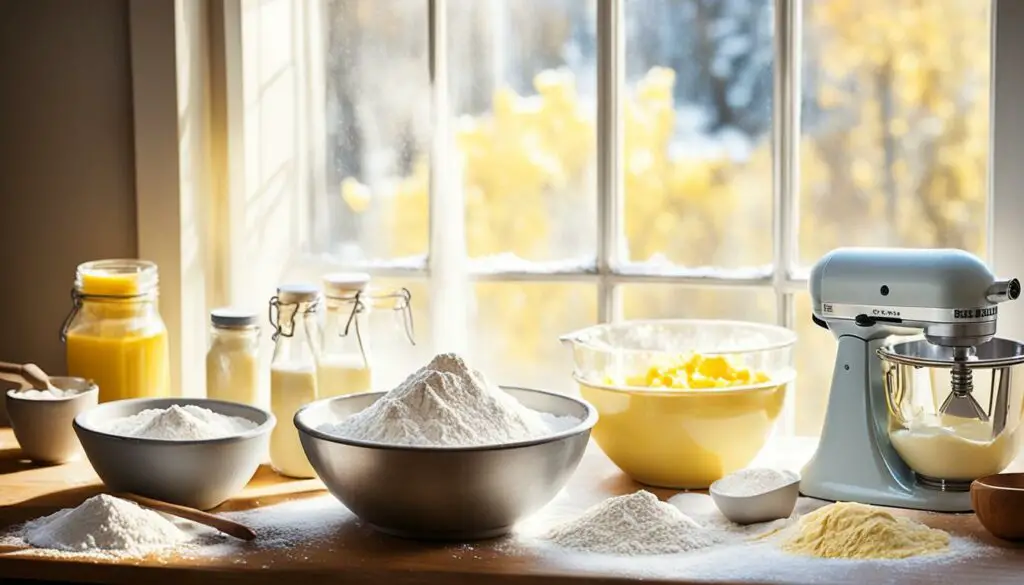
When it comes to baking, both butter and margarine are commonly used as ingredients. The choice between the two depends on personal preference and dietary restrictions. Butter tends to provide a richer flavor and can result in a slightly different texture compared to margarine. On the other hand, margarine can give baked goods a softer texture, which some people prefer.
When substituting margarine for butter in a recipe, it’s recommended to do a one-to-one substitution. This means that you can use the same amount of margarine as the amount of butter required in the recipe. However, it’s always a good idea to test the recipe when making substitutions to ensure the desired outcome.
Here’s a quick comparison of the two:
| Butter | Margarine |
|---|---|
| Rich flavor | Milder flavor |
| Higher saturated fat content | Lower saturated fat content |
| Can brown and caramelize | Does not brown like butter |
Table: Comparison of Butter and Margarine in Baked Goods
As seen in the table above, butter offers a richer flavor and the ability to brown and caramelize, while margarine has a milder flavor and does not brown like butter. Additionally, butter has a higher saturated fat content compared to margarine.
Remember, both butter and margarine can be used in baking, but the choice depends on your taste preferences and dietary needs. Whether you choose butter or margarine, make sure to use high-quality products to ensure the best results in your baked goods.
Using Healthy Butter Alternatives
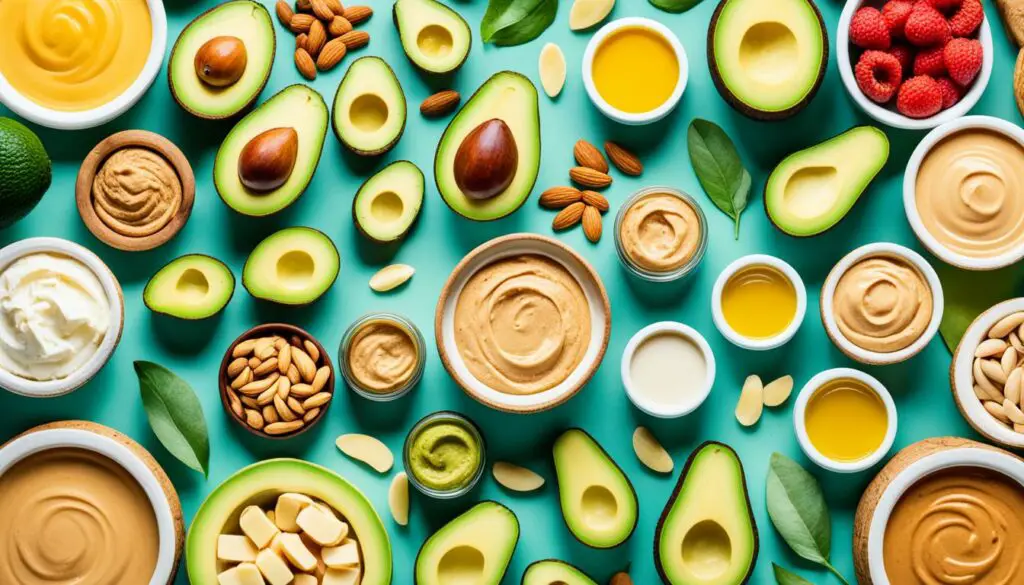
If you’re looking for healthy butter alternatives, there are several options to consider. These options not only provide a similar texture and flavor to margarine but can also help reduce calories and fat in your recipes. Some of the best butter substitutes for margarine are:
- Coconut oil: Coconut oil is a popular choice due to its natural sweetness and mild flavor. It can be used as a one-to-one substitute for margarine in baking recipes.
- Olive oil: Olive oil adds a rich and fruity flavor to your dishes. Opt for extra-virgin olive oil for the best taste and health benefits. It can be used in a one-to-one ratio as a substitute for margarine in baking.
- Canola oil: Canola oil is a versatile and neutral-flavored oil that works well as a substitute for margarine. Use it in a one-to-one ratio in baking recipes.
- Avocado oil: Avocado oil is a healthy and flavorful option. It can be used in a one-to-one ratio as a margarine substitute in baking.
- Vegetable oil: Vegetable oil is a common and accessible option. Use it in a one-to-one ratio as a substitute for margarine in baking recipes.
In addition to oils, there are other healthy butter alternatives that can be used in specific recipes:
- Softened cream cheese: Softened cream cheese can be a great substitute for margarine in recipes like frosting or cheesecake.
- Reduced-fat cream cheese: Reduced-fat cream cheese can be used for a lighter option without compromising taste and texture.
- Trans-fat-free vegetable or olive oil spreads: These spreads provide a convenient option for those looking for a margarine substitute. Look for spreads that are trans-fat-free and contain healthier fats.
- Tofu: Tofu can be used as a butter substitute in recipes like brownies. It adds moisture and texture without affecting the taste.
- Baby prunes: Baby prunes can be used in dark baked goods to cut fat and add natural sweetness.
- Unsweetened applesauce: Unsweetened applesauce is a popular fat-free substitute that can be used to reduce calories and add moisture to your recipes.
Experimenting with these healthy butter alternatives can not only diversify your cooking and baking but also provide you with nutritious and delicious options. Don’t be afraid to try different substitutes and find the ones that work best for your taste preferences and dietary needs.
Now, let’s take a closer look at the differences between butter and margarine in Section 8.
Butter or Margarine for Cooking

When it comes to cooking, both butter and margarine can be used to add delicious flavors to your dishes. Butter, with its rich taste, can enhance the overall flavor profile and add a touch of indulgence to your meals. Margarine, on the other hand, can be a suitable substitute for those with dietary restrictions or individuals looking to limit their cholesterol and saturated fat intake.
Choosing high-quality butter and margarine products is essential to ensure the best flavor and results in your cooking. Opting for organic or locally sourced butter can provide an authentic and natural taste to your dishes. Similarly, selecting margarine made from real ingredients and free from artificial additives can help maintain the desired flavor.
If you’re looking for a dairy-free and lower cholesterol option for cooking, extra-virgin olive oil can be an excellent alternative. It adds a unique flavor and brings a healthy twist to your recipes. Incorporating olive oil not only provides a delicious taste but also offers potential health benefits due to its high levels of monounsaturated fats and antioxidants.
“Both butter and margarine have their benefits in cooking. Butter offers a rich and indulgent taste, while margarine can be a suitable substitute for various dietary needs. Choosing high-quality products ensures the best results in terms of flavor and health.”
Cooking with butter or margarine can bring moments of joy and satisfaction to your kitchen. Whether it’s the rich taste of butter or the versatility of margarine, both have their place in culinary creations. Incorporate these ingredients mindfully, keeping in mind your dietary requirements and personal taste preferences.
Experiment with different recipes and find the perfect balance of fats that suit your cooking style and preferences. Remember, the key to exceptional cooking lies in the quality of ingredients and the enjoyment you bring to the process.
Conclusion
In conclusion, when it comes to choosing between butter and margarine, both can be used interchangeably in recipes with some slight variations in flavor and texture. Butter provides a richer and more pronounced flavor, making it a preferred choice in baking. On the other hand, margarine can be a suitable substitute, especially for those who have dietary restrictions or are looking to reduce their cholesterol and saturated fat intake.
When substituting one for the other, it is important to consider the desired outcome and test the recipe to ensure the best results. Additionally, for those seeking healthier alternatives, coconut oil, olive oil, and vegetable oil can be used as substitutes for both butter and margarine.
Ultimately, the choice between butter and margarine depends on personal preference and dietary needs. It is important to choose high-quality products to ensure the best flavor and results in cooking and baking. Whether you choose butter, margarine, or a healthy alternative, experimenting with different options can help you find the perfect fit for your recipes.
FAQ
Can butter be substituted for margarine in a recipe?
Yes, butter can be substituted for margarine in a recipe. Both can be used as a one-to-one swap.
Can I use butter instead of margarine when baking?
Yes, butter can be used instead of margarine when baking. Butter tends to yield better results in baking with a richer flavor and the ability to brown and caramelize.
What are some healthy butter alternatives for margarine substitutes?
Coconut oil, olive oil, canola oil, avocado oil, and vegetable oil are all healthy butter alternatives that can be used instead of margarine.
What is the difference between butter and margarine?
Butter is made from cream and sometimes added salt, while margarine is made from a combination of oils, water or milk, vitamins, salt, preservatives, sweeteners, emulsifiers, and additives.
Which is healthier, butter or margarine?
Butter is generally considered the healthier choice over margarine as it is less processed and contains fewer ingredients. However, moderation is key due to its higher saturated fat content.
Can both butter and margarine be used in baked goods?
Yes, both butter and margarine can be used in baked goods. Butter provides a richer flavor, while margarine can give baked goods a softer texture.
What are some good substitutes for margarine when baking?
Other than butter, softened cream cheese, reduced-fat cream cheese, vegetable or olive oil spreads (trans-fat-free), tofu, baby prunes, and unsweetened applesauce are all good margarine substitutes for baking.
Can I use butter or margarine for cooking?
Yes, both butter and margarine can be used for cooking. Butter provides a rich flavor, while margarine is a suitable substitute for those with dietary restrictions or looking to limit cholesterol and saturated fat intake.
What is the conclusion about butter and margarine substitution?
The choice between butter and margarine for substitution depends on personal preference, dietary needs, and the desired outcome of the recipe.

